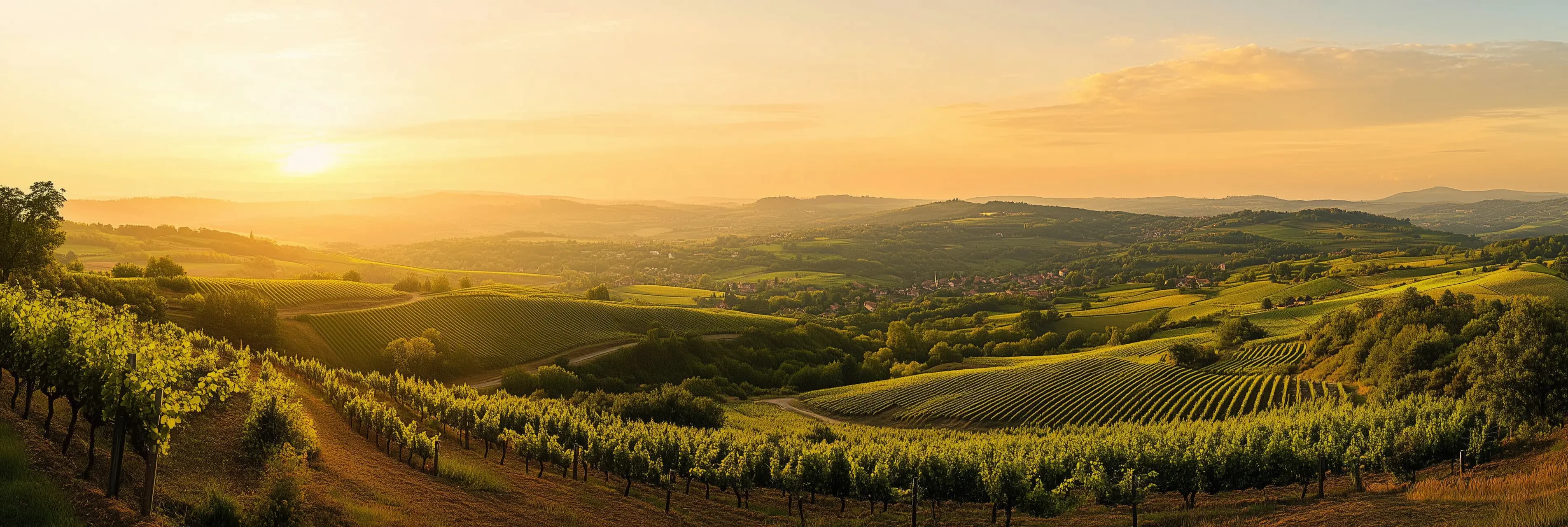How to properly store and serve Beaujolais wine
Beaujolais wine is celebrated for its bright, fruity character and approachable style. Whether it's the fresh Beaujolais Nouveau or the more structured Beaujolais Crus, how you store and serve these wines significantly impacts the tasting experience. Here’s an in-depth guide to ensure you enjoy Beaujolais at its best.
Storing Beaujolais: the essentials
To preserve Beaujolais wines, it’s crucial to store them under optimal conditions:
Temperature and Humidity
Store Beaujolais at a stable temperature between 12°C and 14°C (54°F to 57°F) with a humidity level around 70%. A dark, cool place such as a cellar is ideal; avoid exposure to sunlight, which can degrade the wine in just a few hours. Excess light and fluctuating temperatures can quickly spoil the wine’s delicate aromas and flavors.
Position
Bottles with corks should be stored horizontally to keep the cork moist and airtight, preventing air from entering the bottle. This is crucial for maintaining the wine's integrity over time.
Long-term Storage
While most Beaujolais wines are best consumed within a year, some Crus, like Moulin-à-Vent, Morgon, and Juliénas, have the structure to age for up to 10 years when stored correctly. These wines develop more complex notes of earthy spices, mature red fruits, and floral undertones, becoming richer and more nuanced.
Serving Beaujolais: getting the temperature right
Serving temperature plays a crucial role in showcasing the wine’s characteristics:
Beaujolais Nouveau and Villages
These wines should be served slightly chilled, between 12°C and 14°C (54°F to 57°F). This range enhances their fresh and fruity notes without muting the flavors. The slight chill accentuates the vibrant aromas of raspberry, cherry, and strawberry, making these wines ideal for casual drinking and outdoor events.
Beaujolais Crus
For more structured Crus, such as Morgon, Moulin-à-Vent, and Chénas, serve at a slightly higher temperature, around 15°C to 17°C (59°F to 63°F). This temperature range allows the wine’s deeper, more complex flavors to shine, highlighting notes of ripe dark fruits, subtle tannins, and sometimes a hint of minerality. Wines that are over three years old can also benefit from being served closer to 17°C, enhancing their evolved aromas and depth.
Avoid over-chilling
Too cold, and the wine’s aromas will be muted. A quick chill in the fridge for about 15 minutes is often sufficient. Never store the wine in the freezer, as sudden temperature drops can alter its balance.
Choosing the right glassware
The right glass can enhance the Beaujolais tasting experience:
- Medium-Sized Glasses: Use glasses with a slightly narrower opening to focus the fruity aromas. This is particularly effective for Beaujolais Nouveau and Villages wines, as it helps concentrate the vibrant bouquet.
- Handling with Care: For Crus, gently swirl the wine to release its complex bouquet of red fruits, floral notes like violet, and sometimes earthy or spicy hints. The swirling action helps aerate the wine slightly, bringing out its best characteristics.
Decanting: to decant or not?
Decanting is generally unnecessary for young Beaujolais wines. These wines are meant to be enjoyed fresh, with their fruity and floral notes at the forefront. However, for older Beaujolais Crus, a light decanting can be beneficial. This helps soften the tannins and allows more mature, subtle aromas to develop, enhancing the overall tasting experience.
Pairing Beaujolais with food
One of the great pleasures of Beaujolais is its versatility with food, which is why it pairs wonderfully with a variety of dishes.
Classic Lyonnais dishes
Beaujolais Nouveau pairs beautifully with Lyon’s traditional dishes like saucisson de Lyon (Lyon sausage), quenelles de brochet (pike dumplings), and salade lyonnaise (frisée salad with lardons and poached egg). The wine’s acidity cuts through the richness of these foods, creating a balanced and delightful experience.
Hearty dishes for Beaujolais Crus
More structured Beaujolais Crus like Morgon or Moulin-à-Vent are excellent with robust dishes such as coq au vin, bœuf bourguignon, and roasted game meats. Their complex, earthy notes complement the flavors of slow-cooked meats and stews. These wines also pair well with mushroom-based dishes and hard cheeses.
International Pairings
Beaujolais is not limited to French cuisine; it pairs well with a range of international flavors. Its bright acidity and light tannins make it an excellent match for spicy dishes such as lamb curry or Asian cuisine. The wine’s fruit-forward profile complements the bold, vibrant spices of these dishes without being overpowering.
Proper storage and serving are key to maximizing the enjoyment of Beaujolais wines. From the fresh and fruity Beaujolais Nouveau to the complex and structured Crus, each type of Beaujolais has something unique to offer. Whether paired with traditional Lyonnais fare or international dishes, Beaujolais offers a versatile and delightful wine experience that caters to every palate.

